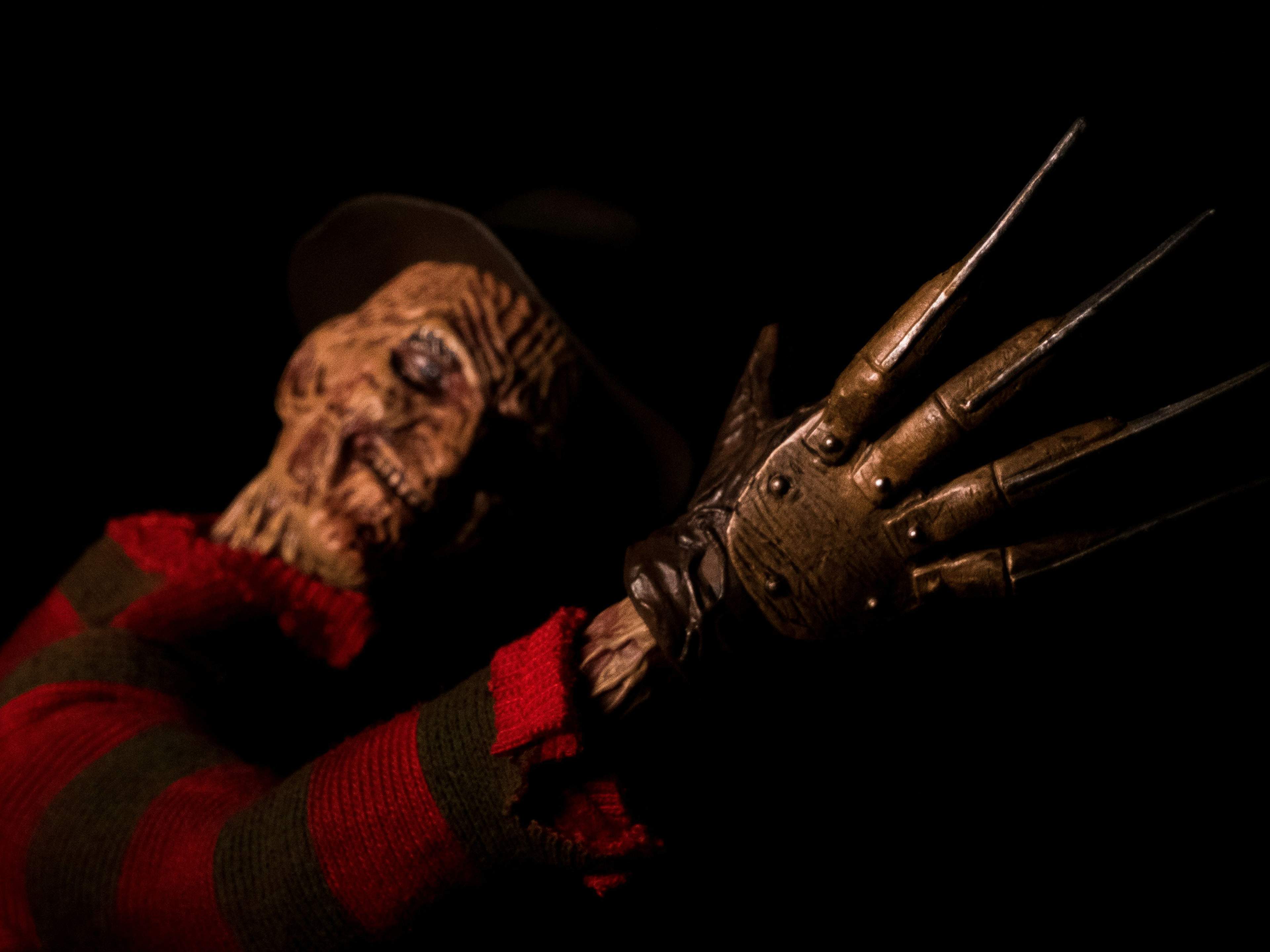Nitghtmare on Elm Street - A Materclass in Horror
Think about the emotion evoked by your greatest nightmare. Remember the fear and panic as you struggled to escape that menacing monster or encompassing embarrassment. Such a feeling is encapsulated in Wes Craven’s 1984 horror classic, A Nightmare on Elm street, which ensured viewers would never sleep easy again.
In this review, the codes and convention Craven used to represent a suspenseful setting, engaging characters and terrifying mood will be investigated to understand this film’s legacy. Please make sure to prepare the coffee because after learning how this movie affected the western film industry, you may never want to sleep again.
To appreciate the extent of this film’s impact, we must first understand the horror genre’s origins. Produced in 1896, the French film, Haunted Castle, was three minutes long and introduced audiences to fear-driven story telling. With its immense success, particularly in the emergence of Hollywood, other producers soon began experimenting with fear through cinema. Notably, films like The Cabinet of Dr Caligari, Dracula and Frankenstein capitalised on the success of Haunted Castle, creating new standards for horror-based films. However, following the 1960’s, the genre’s popularity declined until films like A Nightmare on Elm Street inspired a boom in horror popularity during the 1980’s. Such was the nature of its intuitive take on fear that a dying genre was revitalised and a plethora of sequels were produced.
Through the use of symbolic and technical codes, Craven creates a captivating setting for the film. The action, for example, regularly takes place not in reality but, within the nightmares of the protagonists, forcing audiences to question the difference between dream and reality. This convention, to blur the boundaries between reality and illusion, ensures audiences are mystified in the lead up to murders, hence creating a feeling of unease. The establishment of dreams within a claustrophobic and somber environment, where dim lighting creates shadow and menace, also symbolises the fear victims experience. In particular, the use of shadow, hazy mist and jump cuts within tight spaces creates panic and suspense as the villain, Freddy Kruger, could be lurking anywhere. Wide shots are also prolific in these sequences, representing such settings as enclosed or narrow with nowhere to hide.
The construction of investable characters, using common technical or symbolic codes and conventions, is also imperative in creating a strong narrative. For example, Craven’s use of multiple ECU and CU shots to highlight Kruger’s murder weapon, a glove with bladed fingers, is incredibly effective as it exposes viewers to the threat imposed by the villain. Consequently, this instigates a sense of anxiety. Kruger’s grotesque face is also a powerful symbolic code as it represents his unpleasant nature.
This unpleasantness creates fear by physically representing a viewer’s perception of, excuse the pun, the monster under the bed.
The films protagonists also comply with symbolic codes, hence creating a riveting plot. The portrayal of these characters as unintelligent teenagers, for example, allows succeeding events to occur, as they ignore the signs of their impending demise. Tina’s character exemplifies such ignorance, appearing as a young blonde who disregards reason and has sex with a questionably psychotic boyfriend.
As the rule of horror goes, no virginity, no survival and, consequently, Tina is the first of Freddy’s victims.
However, despite starting as naïve, fellow protagonist Nancy slowly grows to defy such a stereotype, leading to her survival. At least, that’s what audiences are made to think ...
As is the case with all horror classics, symbolic, technical and audio codes are also pivotal in establishing a terrifying atmosphere for The Nightmare on Elm Street. The way sound slowly builds as victims approach their demise certainly creates suspense, pushing audience members to the edge of their seat as the sound’s pitch and pace rise. These tones are clearly imperative in producing terror as it creates the sensation of blood rushing through your veins.
Technical codes such as POV shots and shaky cam footage also generate a sense of urgency for viewers by producing a frantic atmosphere. Such technical codes hence instigate panic by placing viewers within the victim’s shoes, where terrifying emotions are experienced first-hand.
The portrayal of a phone as a communication tool between Kruger and protagonist Nancy, is another common symbolic horror convention. However, it has been applied spectacularly, representing a mystic feel and symbolising the human fear of encountering a predator. As you can see, the application of audio codes, technical and symbolic codes undisputedly contribute to representing the film’s chilling mood.
There is little doubt that A Nightmare on Elm Street has had an immense influence on the contemporary film institution. Not only did it introduce the now iconic Freddy Kruger, its unique representation of fear revitalised the genre and refined common horror tropes. Craven regularly uses pre-established horror conventions with his own twist to provoke anxiety, panic and terror for viewers.
Notably, setting the film within nightmares greatly enhances the cliché of horror movies occurring in isolated locations, with victims literally being secluded within their minds without anyone to help them. Craven also highlights the importance of symbolism, leading to a multitude of contemporary horror movies representing grotesque villains and purposely constructed the plot to feature a female heroin, breaking previous horror expectations where females were always victims. This trope has since carried through to films like 2017's A Quiet Place which stars strong female leads.
A Nightmare on Elm Street was immensely successful, using a multitude of horror techniques to instigate fear. Never, has a horror movie broken and refined so many conventions which are stilled used within the genre today. Clearly, Craven made an immense contribution to the Western film institute with this movie.
